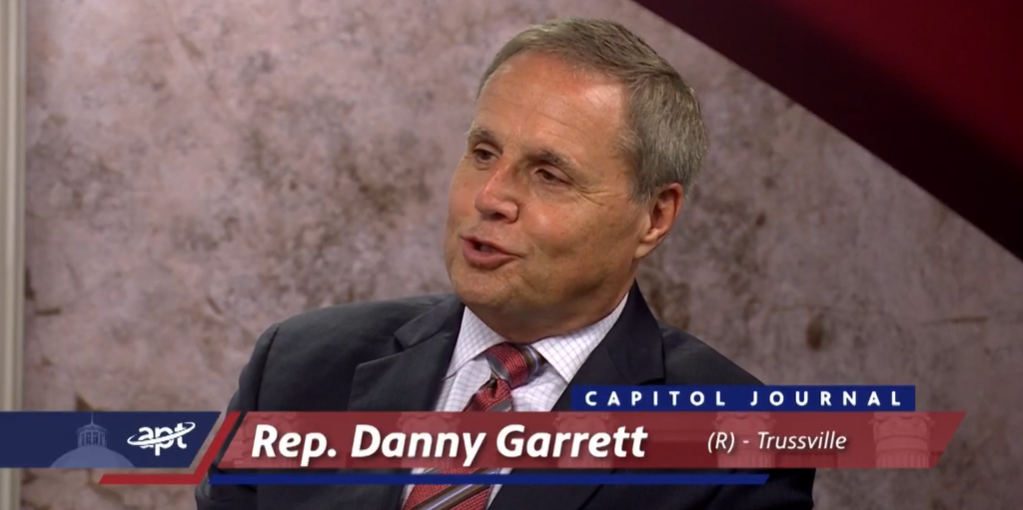State Rep. Danny Garrett, chairman of the Alabama House Education Trust Fund Committee, appeared on the Capitol Journal last Friday to discuss the state's Education Trust Fund budget and its continued increases.
Garrett said the Alabama Education Trust Fund for Fiscal Year 2025 passed by the Alabama Legislature is the largest ever and will mark the sixth consecutive year of budget expansion.
“It's $9.3 billion,” said Sen. Garrett, R-Trussville. “And on top of that, we've allocated $1 billion for the Advanced Technology Fund. And we've appropriated $651 million for that, and we've allocated additional funding. So, all in all, it's a big chunk of money.”
Garrett said the overall budgeting process has been changed to limit budget increases over the next few years.
“Last year we put in a second cap that limited the growth of the budget. So now we have a calculation that we can spend based on our income, but now we have a cap that limits the rate at which the budget can grow over the year. Last year the budget grew by 6.5 percent, this year it can only grow by 6.25 percent. Next year it can only grow by 6 percent, so it goes down to 5.75 percent.”
“At the end of the day, when all of this is done and this budget is passed, we will have $794 million in the Continuing Reserve Account, $1.5 billion in the Investment Technology Fund, $1 billion in the Education Savings Account Fund, and we also have an emergency account that we can borrow from and access $647 million in,” Garrett said.
“We've been growing our budget responsibly, we've been able to sustain it and we're in a good position with reserves.”
“Right now, the way we allocate funds is mostly based on staffing numbers, which means we take the education funds that are available and allocate or distribute them based on staffing numbers in each system, but that's not the current staffing numbers, it's the staffing numbers from two years ago.”
Garrett also noted that the recently enacted school choice system is currently not funded through the education budget.
“We just instituted school choice and we didn't reach this education budget,” Garrett said, “and we're setting aside funding for it through a different mechanism, a supplemental budget that will kick in in a few years. But ultimately if school choice programs expand, we'll need to be aware of that and understand that.”
RELATED: Alabama House passes education budget plan that includes 2% pay hike
He said he believes Alabama is lagging behind other states when it comes to education funding.
“Right now we're essentially funded based on headcount and not based on the specific needs of the system. A lot has changed in the 30 years since we adopted this method.”
“What we have provisioned and what we've allocated is allocated based on the head count of each system, and that's not actually today's head count,” Garrett said. “That was two years ago, and 20 days after Labor Day is kind of a snapshot in time.”
Garrett said most states now look at each district and system and score them based on their individual needs.
“If you have a district with a high percentage of special needs students, or a district with a high percentage of ESL students, or you're in a high-poverty area, you have transportation issues and all sorts of other issues. The state right now doesn't fund those issues because they basically take a levy and divide it by the number of students.”
Garrett said schools currently don't have much flexibility in choosing how to spend the funds.
“But ultimately, when you get into the education model that we're talking about, it's about evaluating the system and funding it appropriately, and not necessarily itemizing funding everything. For example, right now we only provide system funding, but we tell them they need to spend this amount on busing and this amount on eggs.”
“This gives the system the latitude to, within certain limits, take the money it needs based on the scoring methodology and put it where it needs to go,” Garrett said.
“For example, in this year's supplemental budget, the governor had a target of $100 million for school safety, and we removed that budget, but increased the A and T budget by over $300 million. That's because some systems don't need to use that money directly on security. Those systems' needs may already be met, but other systems need it. So instead of just handing the money to the systems, we need to spend it this way. Give them some flexibility.”
Garrett said changes to the funding process are complicated and will continue to be complicated.
“It's a complicated process. There's a lot of work to be done. But there's certainly support among many voters and education groups. Again, we're one of six states that haven't jumped on the bandwagon yet. We're probably seriously studying this and hoping to come up with something in the near future, but we need some funding to move into something like that.”
Austin Shipley is a staff writer for Yellow Hammer News.
Do not miss it! Subscribe now Get the top Alabama news stories delivered to your inbox.

















